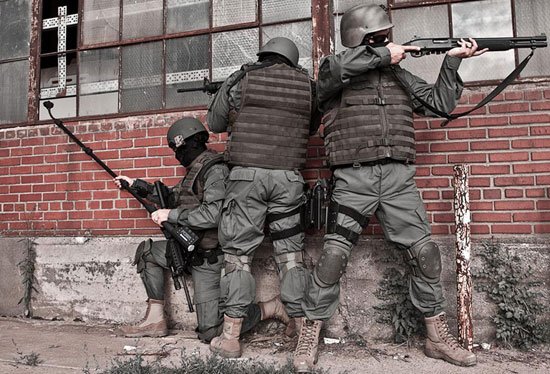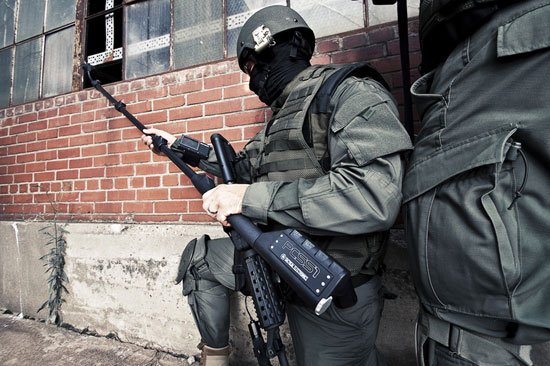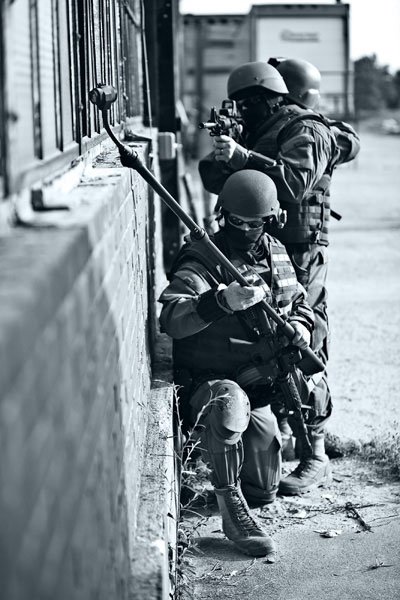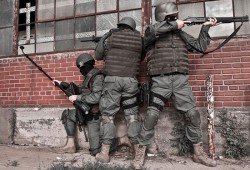
In this article, I’ll discuss some basic tactical applications for the use of a pole camera in supporting of both Patrol and SWAT operations.
Several years ago, while I was still a Team Leader in SWAT, our commander found some unspent funds at the end of a fiscal year. Since the money would go back into the municipality’s general fund, we were urged to purchase any needed equipment.
We had borrowed a neighboring city’s remote pole-mounted camera on a few operations. The consensus of the TL’s and ATL’s was that buying our own would be a good use of the financial windfall.
Borrowing the other agency’s camera usually involved a time delay and the commandeering of one of their operators. Delays can be critical during an in-progress incident. In addition, issues can arise when intermixing operators from different teams.
We bought a Tactical Electronics pole camera that has a wireless monitor. We felt this increased officer safety by splitting the responsibilities of handling the pole camera and viewing the monitor between two officers, instead of one.
The camera handler can better focus on his or her surroundings while manipulating the pole. The monitor viewer can be in a safe, or safer, location either nearby or hundreds of feet away, communicating by voice or radio.
The unit we purchased has black and white and color infrared camera heads, so no visible light is needed. The camera can be deployed stealthily in total darkness.
Upon receiving the camera, each officer on the team was given familiarity training in setting up the system and using it as both the camera handler and monitor viewer. The officers were also trained as lethal cover for the camera handler.
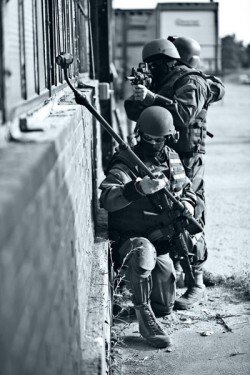
We found it takes patience and clear communication between the camera handler and monitor viewer to make this system effective and efficient for search work.
A pole-mounted camera is usually utilized in attic spaces, but it can also be employed to search drop ceilings, basement entryways, stairwells, under-house crawl spaces, underground drainage systems, and similar hiding areas.
Key to using a pole camera in a residence is acknowledging that ceilings and walls are concealment, not cover. We try to protect the camera handler with 360 degree fire support. In this way, any incoming fire will be met with vigorous outgoing fire.
Officers also train to utilize ballistic shields in conjunction with the pole camera system. This takes a bit of practice. As with any high-risk search work, it is all about minimizing threat angles.
A month after the murder of two St. Petersburg, FL police officers by a suspect in an attic, we had two different calls which began with similar circumstances.
In one situation, a subject with felony warrants, and a firearms arrest history, climbed into his apartment attic when a bail bondsman knocked on his door.
On-duty SWAT members were activated and I acted as the on-scene incident commander. Once the situation was fully contained and the building evacuated, we dictated the pace of our response by officer safety standards. In other words, we slowed things down.
Initial attempts to communicate with the suspect by a negotiator went unanswered. The apartment building’s attic space lacked firewalls, so the suspect could drop down into any of the eight top-floor units.
When we had adequate coverage, we deployed the camera into his attic access. The suspect was not immediately seen. The monitor viewer gave methodical instructions to the camera handler and a systematic sweep was done.
The suspect had concealed himself in the fiberglass ceiling insulation, but a very small part of him was just barely visible. The suspect was verbally challenged. He did not reply.
The monitor viewer shouted out the suspect’s exact location in relation to the attic access. We know where you are! He immediately surrendered.
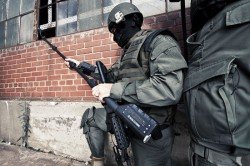
Two weeks later, one of our K9’s tracked a hit and run suspect to his duplex’s door. I had trailed the dog team on the track. Both the K9 handler and I heard the guy trying to get up into his attic. He actually crashed down on the first attempt.
Although the investigation indicated the suspect may not have made it into the attic space, there was a successful resolution after we followed our established tactical doctrine and used the pole camera.
The purchase of our pole camera system was accomplished by articulating the necessity of the unit from an officer safety standpoint to our chain of command and elected officials. The camera was used in the field only after SWAT team members were fully trained and scenarios were practiced.
If your department does not have a pole-mounted camera system, develop a partnership with a neighboring agency that does. It can be an invaluable tool. Stay safe.
(Before any Internet trolls emerge, I am not critiquing the incident in St. Pete. I have either worked with or known at least four of the officers in the shoot-out itself, to include one of the deceased and the wounded federal agent. I have also reviewed the State Attorney’s factual investigation of incident. The officers acted professionally, with extreme bravery, and in accordance with policy and procedure on that day.)
Randall is a twenty-four year veteran officer of a mid-size Florida police department. He served as a SWAT team officer for over 21 years, to include 12 years as a Team Leader. He is currently the K9 Unit Sergeant and department SWAT Coordinator.
